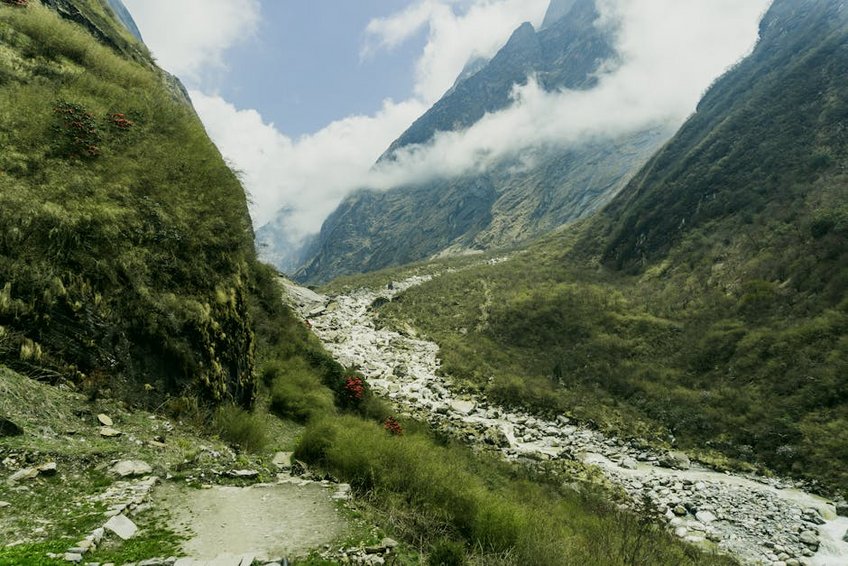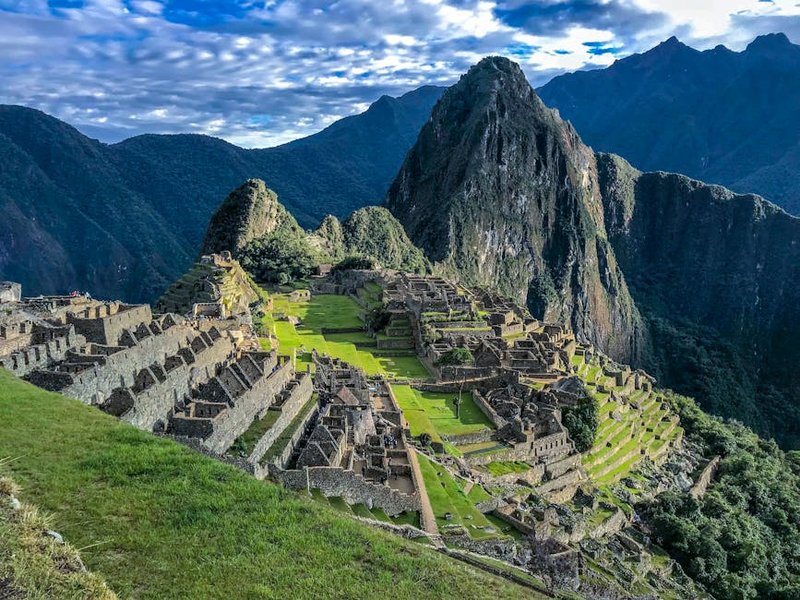Machu Picchu Travel Guide: Your Ultimate Journey to the Lost City
Machu Picchu stands as one of the most breathtaking archaeological wonders you’ll ever experience, perched high in the Andes Mountains of Peru. This 15th-century Inca citadel, often called the “Lost City of the Incas,” offers more than just ancient ruins—it provides a profound connection to history, culture, and stunning natural landscapes. Whether you’re an adventure seeker hiking the Inca Trail or a cultural enthusiast exploring ancient architecture, Machu Picchu delivers an unforgettable journey. The site’s mysterious history, incredible preservation, and dramatic mountain setting create a travel experience that stays with you long after you’ve returned home. From the moment you first glimpse the iconic terraces through the morning mist, you’ll understand why this destination captures hearts and imaginations worldwide.
Machu Picchu Essential Information – What Every Traveler Should Know
Before embarking on your Machu Picchu adventure, understanding the practical details will ensure a smooth and enjoyable experience. The site sits at approximately 2,430 meters (7,970 feet) above sea level, which means altitude considerations are important for most visitors. You’ll need to purchase tickets in advance through the official government website, as daily visitor numbers are limited to protect the site. There are different circuit options available, with Circuit 4 being the most comprehensive route that includes all major areas. Most travelers combine their visit with stays in Cusco or the Sacred Valley, which helps with acclimatization while offering additional cultural experiences. The dry season from May to October offers the best weather conditions, though this also means larger crowds and higher prices.
Entry Requirements and Tickets – What You Need to Know
- All visitors must purchase tickets in advance through the official Ministerio de Cultura website, with no ticket sales at the entrance
- You’ll need to present your original passport (not a copy) matching the name on your ticket for entry
- Consider adding Huayna Picchu or Machu Picchu Mountain to your ticket for additional hiking opportunities with limited daily availability
- Budget travelers can experience Machu Picchu for around $350-500 including basic accommodations, train tickets, entry fees, and meals
- Mid-range options with comfortable hotels, guided tours, and better train service typically cost $800-1,200 per person
- Luxury experiences including Belmond hotels, private guides, and premium train compartments range from $1,500-3,000+
- Official Machu Picchu Website
- Lonely Planet Machu Picchu Guide
Altitude and Health Considerations – Key Details
Altitude sickness can affect anyone regardless of fitness level, so proper acclimatization is crucial. Spend at least 2-3 days in Cusco (3,400 meters/11,200 feet) or the Sacred Valley (2,800 meters/9,200 feet) before attempting Machu Picchu. Stay hydrated, avoid alcohol, and consider medications like acetazolamide if prone to altitude issues. The site involves significant walking on uneven stone paths, so comfortable footwear is essential. During my visit, I found that chewing coca leaves (a traditional remedy) and moving at a slower pace made a noticeable difference in how I felt throughout the day.

Machu Picchu Planning Your Trip – Season, Budget and Preparation
Proper planning transforms your Machu Picchu experience from good to extraordinary. The journey typically begins in Cusco, where you’ll want to allocate time for acclimatization while exploring incredible colonial architecture and Inca ruins. Your budget will vary significantly depending on whether you choose luxury accommodations or backpacker options, with the biggest expenses being transportation and guided tours. The classic Inca Trail trek requires booking 6-8 months in advance during peak season, while train options offer more flexibility. I recommend allocating at least 4-5 days for the entire experience, including travel time to and from Cusco, to fully appreciate the region without feeling rushed.
Best Time to Visit Machu Picchu
The dry season from May to October offers the most reliable weather with minimal rainfall, making it ideal for hiking and photography. However, this is also peak season with higher prices and larger crowds. The shoulder months of April and November provide a good balance of decent weather and fewer visitors. The rainy season from December to March sees frequent afternoon showers but lush green landscapes and significantly fewer tourists. Having visited in both June and February, I found the winter crowds manageable with early morning entry, while the summer greenery created spectacular photographic opportunities despite occasional rain.
Budget Planning and Costs
Essential Preparation Checklist
Start preparing several months before your trip, especially if planning to hike the Inca Trail which requires permits. Break in hiking shoes well in advance to avoid blisters during your visit. Pack layers including a waterproof jacket, as weather can change rapidly in the mountains. Bring sunscreen and sunglasses—the high altitude means stronger UV exposure. Secure necessary medications for altitude sickness and digestive issues. Learn basic Spanish phrases that will enhance your interactions with local guides and residents. Don’t forget your original passport, as you’ll need it for entry and for getting a special Machu Picchu stamp at the site exit.
Machu Picchu Top Attractions and Activities – Beyond the Main Ruins
While the iconic postcard view of Machu Picchu is undoubtedly spectacular, the site offers numerous fascinating areas to explore beyond the classic photography spots. The Temple of the Sun showcases incredible Inca stonework with precisely cut stones forming a circular tower that aligned with solstice events. The Intihuatana Stone, often called the “hitching post of the sun,” served as an astronomical clock or calendar. The agricultural terraces demonstrate advanced engineering that prevented erosion while creating microclimates for different crops. The residential areas provide insight into daily Inca life, with distinct sections for nobility and commoners. Don’t miss the Temple of the Three Windows, which frames breathtaking views of the mountains beyond while representing the Inca worldview of three realms.
Must-See Highlights
Every visitor should allocate time for the Guardhouse viewpoint, which offers that classic Machu Picchu panorama you’ve seen in photographs. The best light for photography occurs in early morning or late afternoon, though midday visits often have fewer crowds. The Main Plaza served as the ceremonial heart of the city, where important gatherings and rituals took place. The Sacred Rock resembles the shape of the mountains behind it, showing how Incas incorporated natural formations into their spiritual practices. The Industrial Zone features evidence of workshops where craftspeople created textiles, pottery, and metal objects. Allow at least 4-5 hours to properly explore all these areas without rushing through this magnificent site.
Hidden Gems and Local Favorites
While most visitors head directly to the main ruins, several less-crowded spots offer equally impressive experiences. The Inca Bridge, a short walk from the main site, showcases incredible engineering with a narrow path carved into a cliff face. The Sun Gate (Inti Punku) requires about an hour’s hike uphill but rewards you with panoramic views back over Machu Picchu—this was the original entrance for Inca Trail hikers. The Museum Manuel Chávez Ballón at the base of the mountain provides excellent context about the site’s history and excavation. For a unique perspective, consider the Putucusi Mountain hike across the valley, which offers spectacular views without the entrance fee, though it requires good fitness and careful footing.
Machu Picchu Practical Travel Information – Transportation and Accommodation
Reaching Machu Picchu involves multiple transportation segments that require advance planning. Most international travelers fly into Lima, then take a connecting flight to Cusco. From Cusco, you’ll travel to the town of Ollantaytambo in the Sacred Valley (1.5-2 hours by car or collectivo), then take a train to Aguas Calientes (the town at the base of Machu Picchu). The train journey itself is spectacular, following the Urubamba River through dramatic canyon scenery. From Aguas Calientes, you’ll either hike up to the ruins (about 1.5-2 hours) or take a bus (30 minutes). I recommend spending a night in Aguas Calientes to allow for an early morning visit when the site is less crowded and morning light creates magical photographic conditions.
| Transportation Method | Details and Options | Price Range (USD) |
|---|---|---|
| Flights to Cusco | From Lima (1.5 hours), LATAM and Sky Airlines | $80-150 each way |
| Train to Aguas Calientes | Perurail (Vistadome, Expedition) or Inca Rail | $70-200 each way |
| Bus to Machu Picchu | From Aguas Calientes to entrance (30 min) | $24 round trip |
| Taxi/Collectivo | Cusco to Ollantaytambo or Hydroelectric | $10-40 per vehicle |


